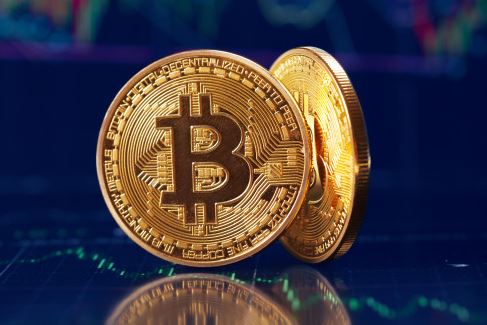
Bitcoin recently touched 90% of its hard limit which is set at 21 million. The rest of the bitcoin will make until 2140 to be mined.
While the original cryptocurrency touched a new milestone, its value has not shown any sign of reviving to its all-time high figure.
Bitcoin block number 714,032 rewarded the miner with 6.25 BTC. This block took the circulation of the digital coin to 18.9 million BTC. This means that there is only 10% of the set limit of 21 million coins that could be mined in the future.
How is Bitcoin Produced?
Bitcoin is a proof-of-work network and requires miners to process transactions and verify blocks. This process is generally known as mining. Miners commit their computing resources to solve millions of complicated calculations per second on the Bitcoin blockchain. In return, they get bitcoin in the form of rewards. Currently, they receive 6.25 BTC against each block mined. It will drop down to 3.125 BTC once the Bitcoin supply is halved in 2024.
It is worth noting that not all the 21 million bitcoins will become available on the open market. It is estimated that around 3.7 million BTC have already been ‘lost’ associated with the process of analyzing address activity. Examples of BTC losses also include owners losing their private keys by mistake or as a result of death. Another 1 million BTC is held by the digital currency’s founder Satoshi Nakamoto.
The 3.7 million coins mentioned above are considered to be not technically inaccessible. This is why they are still counted to be in circulation.
The current milestone would have been achieved 32 blocks earlier at 714,000, had all the miners accepted the entire block reward. However, some early miners didn’t do so, thus reducing the number of bitcoins that entered circulation.
The Bitcoin creator had also stipulated that the early 50 coins in Bitcoin’s Genesis block weren’t meant for spending. Certain early bugs in the system also affected the numbers.
Mining the Remaining Bitcoin
Mining 90% of bitcoin took almost 12 years to complete. This seems to be a much shorter duration compared to the 120 more years that it will take to mine the remaining 10% of the digital coins. This has been estimated based on the halving schedules and network activity.
So, what is Bitcoin halving? The Bitcoin halving schedule is set at 4 years. The process refers to the halving of the BTC rewards paid out of miners for every block they mine. The current reward is set at 6.25 BTC per block.
The halving process is a guarantee mechanism for the longevity of Bitcoin. It will also guarantee continual supply, however, at a smaller number each time.
The mining hash rate also affects the speed at which bitcoin is produced. Actions by the Chinese government on crypto mining activities affected the mining hash rate at the beginning of 2021. However, the rate touched its all-time high recently, reaching 179.5 Ehash/s. This recovery was attributed to Bitcoin mining migrating to other countries where the regulations do not interfere with the activity.
Growth in Bitcoin Prices
As the supply of Bitcoin increased over time, its prices also rose as the demand for newer BITC increased. In early 2010 when only 10% of the coins were in circulation, a Bitcoin cost just around $0.10. By the time the token’s supply reached 50% in 2012, it cost around $7.50 per coin.
Currently, Bitcoin trades at around $49,000. It touched its highest value earlier this year, climbing to a staggering $69,000.
Why the Supply Cap on Bitcoin?
The supply cap was first created by Bitcoin’s creator to create a tapering effect on its supply. Howsoever extensive the mining operations might become, the cap would ensure a gradually declining rate of returns on the asset. According to multiple sources, this effect has so far effectively been achieved.
So, what could happen once there is no more Bitcoin to be mined. It is expected that the digital coin will become increasingly scarce. Miners will start relying more on the transactions taking place on the blockchain.
There is more to Bitcoin than just being a cryptocurrency. It is also a blockchain network where transactions occur on a distributed ledger framework. It has utility beyond the scope of being a cryptocurrency asset. It is also speculated that new technologies will be developed along the way that might bring down the cost of mining, thus increasing miners’ and Bitcoin whales’ profit. However, many think that the Bitcoin Trading Platform will be restricted to use for only high-value transactions. This will help generate enough revenue for the miners and stakeholders.
Interesting Related Article: “A Comparison between Bitcoin and Bitcoin Cash“

